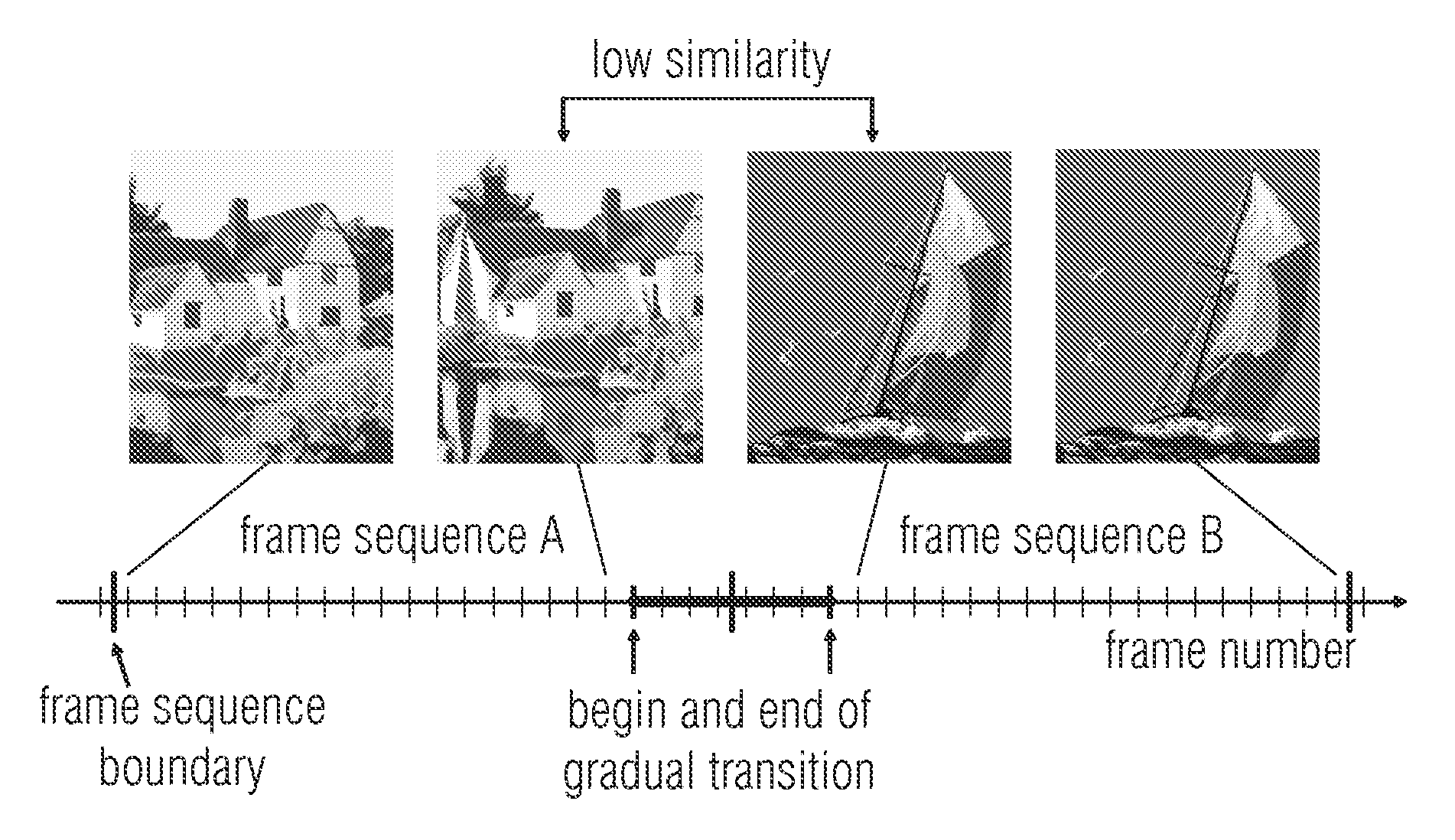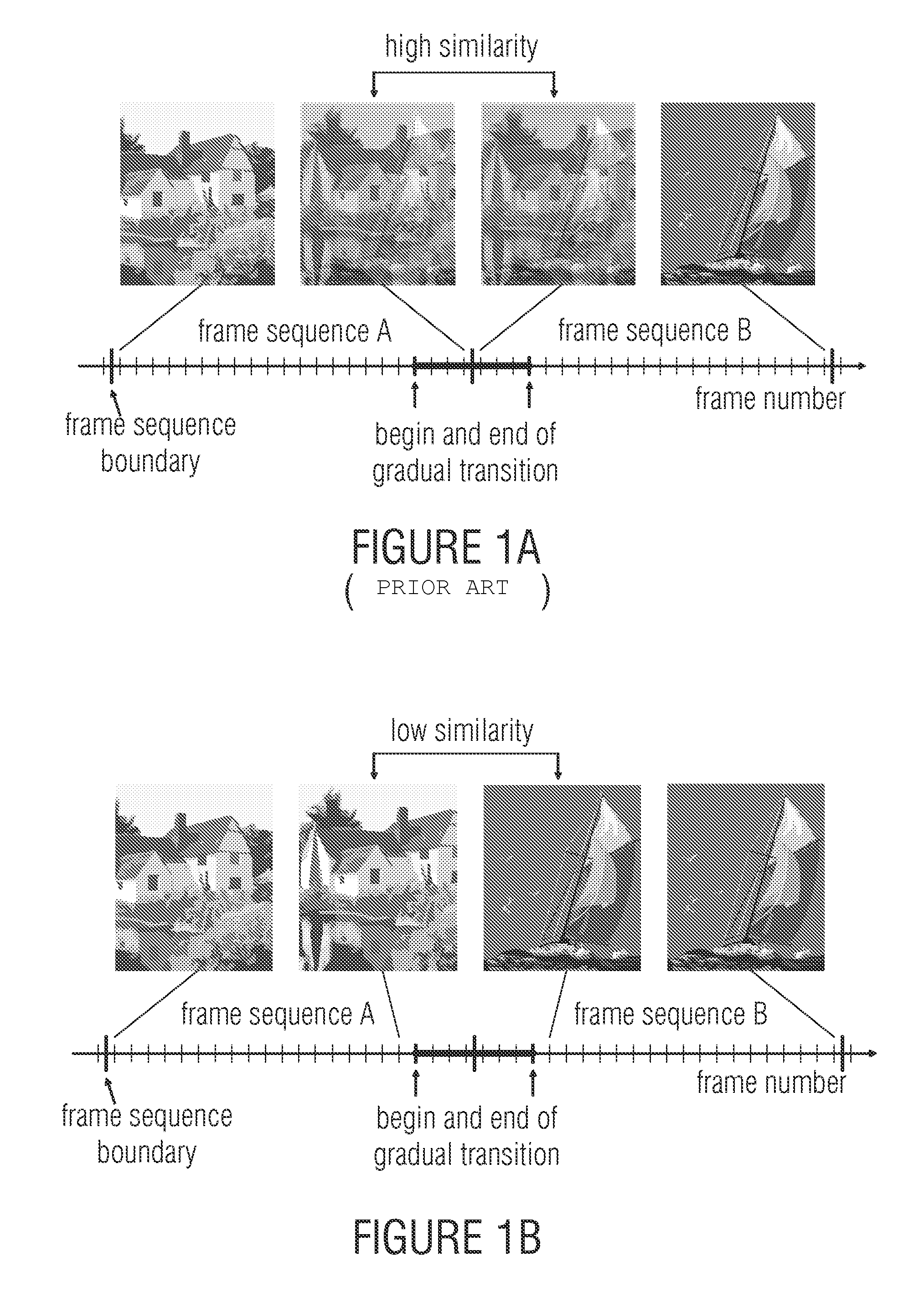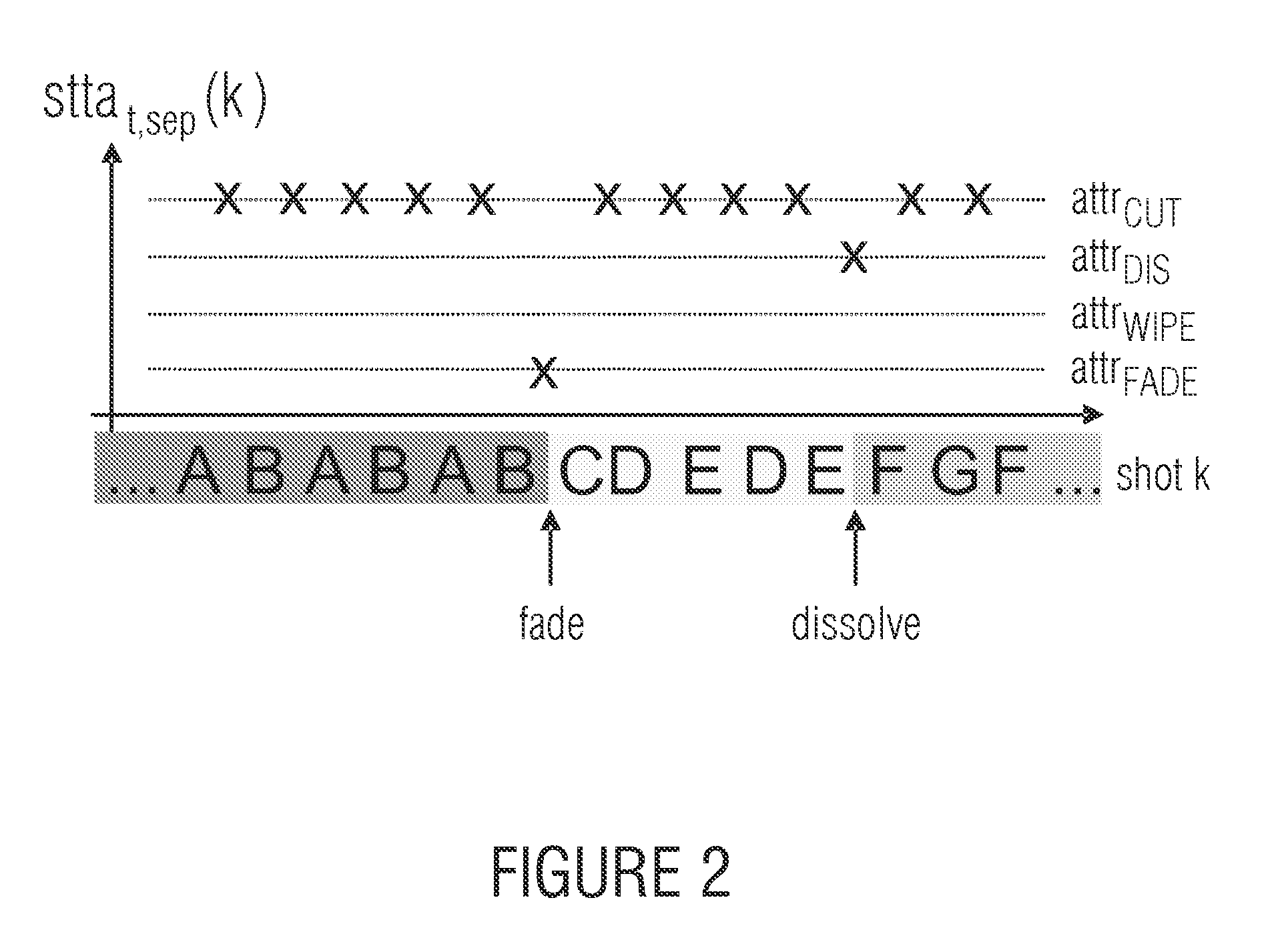Automated method for temporal segmentation of a video into scenes with taking different types of transitions between frame sequences into account
- Summary
- Abstract
- Description
- Claims
- Application Information
AI Technical Summary
Benefits of technology
Problems solved by technology
Method used
Image
Examples
Embodiment Construction
Choice of the Best Video Key-Frames for the Similarity Analysis
[0069]Different similarity measures may be used for performing a similarity analysis between two frame sequences A and B. In general, the similarity between video key-frames of the both frame sequences is determined. For this, X video key-frames kfAx are chosen from frame sequence A, and Y video key-frames kfBy are chosen from frame sequence B. For example, the color or edge similarity may then be used as a similarity measure. The following formula holds true:
sim(shotA,shotB)=maxx-[1,X],y-[1,Y]sim(kfAx,kfBy)(1)
[0070]That is, the maximum similarity between any two video key-frames from the both frame sequences determines the similarity of the frame sequences.
[0071]For this, known methods for similarity analysis utilize exactly the first and the last frame in a frame sequence, since these frames best represent the changes in the frame content within a frame sequence. However, if frame sequence B directly follows frame sequ...
PUM
 Login to View More
Login to View More Abstract
Description
Claims
Application Information
 Login to View More
Login to View More - R&D
- Intellectual Property
- Life Sciences
- Materials
- Tech Scout
- Unparalleled Data Quality
- Higher Quality Content
- 60% Fewer Hallucinations
Browse by: Latest US Patents, China's latest patents, Technical Efficacy Thesaurus, Application Domain, Technology Topic, Popular Technical Reports.
© 2025 PatSnap. All rights reserved.Legal|Privacy policy|Modern Slavery Act Transparency Statement|Sitemap|About US| Contact US: help@patsnap.com



